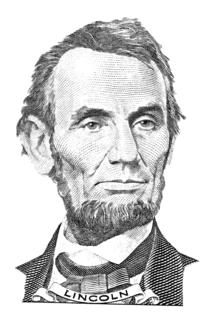
Are you in search of a classroom novel that is engaging and enriching for all readers? James Swanson’s novel, Chasing Lincoln’s Killer, is a fast-paced, nonfiction thriller that accomplishes both requests. It immediately hooks readers’ attention, and takes them through the suspenseful, grueling twelve-day manhunt of President Lincoln’s assassins. In an effort to include more nonfiction literature in our middle school’s language arts curriculum, we added some new reading material. This novel was one of the best novels we acquired. It affords readers the opportunity to use a variety of reading and comprehension skills as they move sequentially through the novel and gather significant historical information about our nation’s history. The following are lesson plans and activities to include before, during, and after reading the novel, Chasing Lincoln’s Killer.
Pre-Reading: Setting the Scene
In any literature study, I like to set the scene for what we are getting ready to read. Prior to beginning Swanson’s novel, I asked students to share their knowledge of Lincoln and his presidency, as well as facts, events, and issues about the Civil War. Individual knowledge was recorded on handouts that resembled a classic K-W-L chart. However, the categories included the following headers: “What I Know,” “What I Think I Know,” and “My Questions.” This helps to separate what information can be proven true, and also records items that are familiar, but will need to be checked for accuracy over the course of the study. The final column is revisited throughout the study as we come across answers to questions and it also serves as a focal point for research. In addition to sorting out knowledge and creating questions, pupils take a look at the Library of Congress website. It includes photographs of the Civil War and Abraham Lincoln. This accomplishes two objectives: first, it allows for class discussion surrounding the setting of our novel, and second, provides the opportunity to discuss the significance of primary resources in historical nonfiction. This leads the class into a picture walk-through of the novel itself. In my class, this is the final activity and prediction discussion before we begin reading.
Reading the Novel: Evidence Collection
One of the many highlights of studying Chasing Lincoln’s Killer, is examining the writing and textual style Swanson utilizes. The text is structured sequentially, and takes place over a time span of twelve days. As students read, they record each day’s events and the facts they learned on a vertical timeline handout. This helps to keep people, places, and events in order. Readers also identify specific structural elements and signal words that enhance the book in their notes. Taking the time to jot down both kinds of notes prepares students for work after reading. Along with taking careful notes, we pause our reading in a few selected places in the book to analyze the resources that are included throughout Swanson’s book. Literature responses include, but are certainly not limited to, comparing and contrasting information presented in various forms of media, as well as evaluating the validity of the resource and its affect on the American public at the time of its release. Students also include comparisons to modern media releases.
After Reading: Bringing it All Together
After a multitude of class and small group discussions, literature responses, and knowledge confirmations, it’s time to wrap up the study. Below is a list of culminating projects that allow learners to choose how they want to best represent their learning and experience of reading the novel. Project options at the end of reading the novel include:
- Newspaper: A chronicle of Lincoln’s assassination and events leading to the arrest of the conspirators. The language and appearance of the newspaper must accurately reflect the setting of the novel (i.e., 1865).
- Visual Timeline: An illustration capturing the main events that took place over the twelve-day manhunt of the conspirators. Each event must be accompanied by a caption explaining its importance to the capture of the fugitives. Illustrations must reflect setting and accuracy of the events described in the novel and must be cited with a page number from the book.
- Research Essay: Any unanswered question from pre-reading, or person included in the book, is fair game for continued research. Essays must be properly cited with an evident connection to the reading.
- Speech: Imitating Lincoln’s genius speech-writing ability, create a speech in dedication to his memory and his affect on modern America.

